6 steps to Icelandic autumn Posted by hulda on Sep 1, 2016 in Icelandic culture, Icelandic customs
Today is the first of September, which means autumn is nearing. In Iceland summer will still continue for a while, to the 28th October to be exact. That will be the first day of winter, or Skammdegi (= short days), meanwhile feel free to enjoy the end of summer that still lives up to its name Náttleysi (= nightlessness).
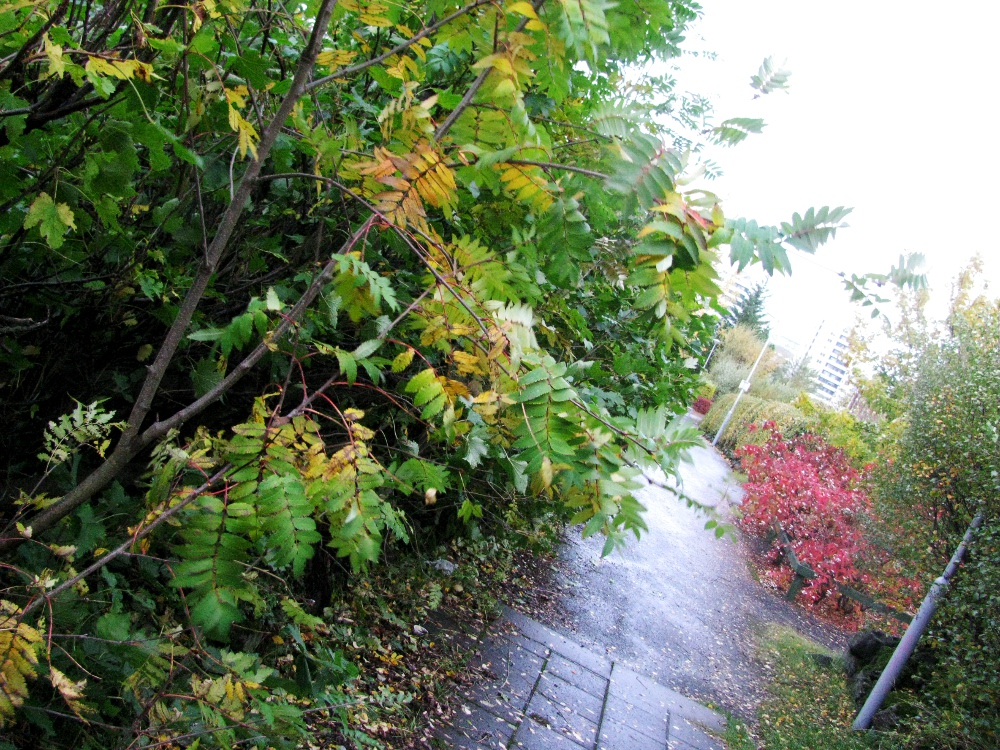
What makes an Icelandic autumn, haust in Icelandic? Here are some things that always herald the change of season for me, in the order they appear.
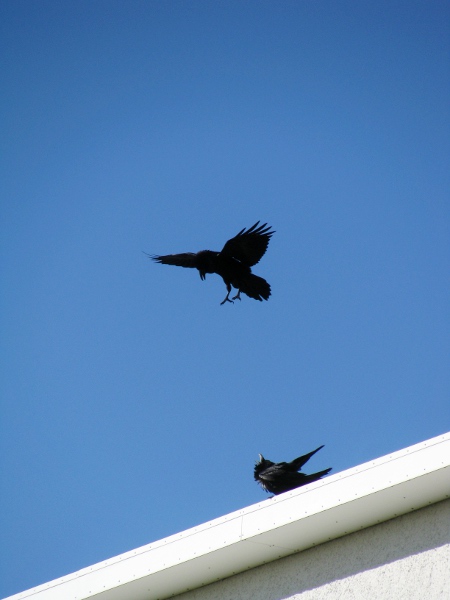
1. Ravens
The first sign that summer is soon over are ravens entering cities and towns, pushing the summery seagulls out of their way. They’ve spent the summer in the highlands but now is time to seek human company again. For Icelanders ravens are good luck birds and some people even feed them in hopes of getting them sit on their house for a while.
Here‘s a popular children’s song about ravens. You’ll find Icelandic lyrics under the video, but basically they go: “Krummi (= nickname for a raven) cronks outside, calling to its namesake (= another raven): ‘I found a ram’s head, ribcage and a skin. Come pick it with me Krummi my namesake!'”
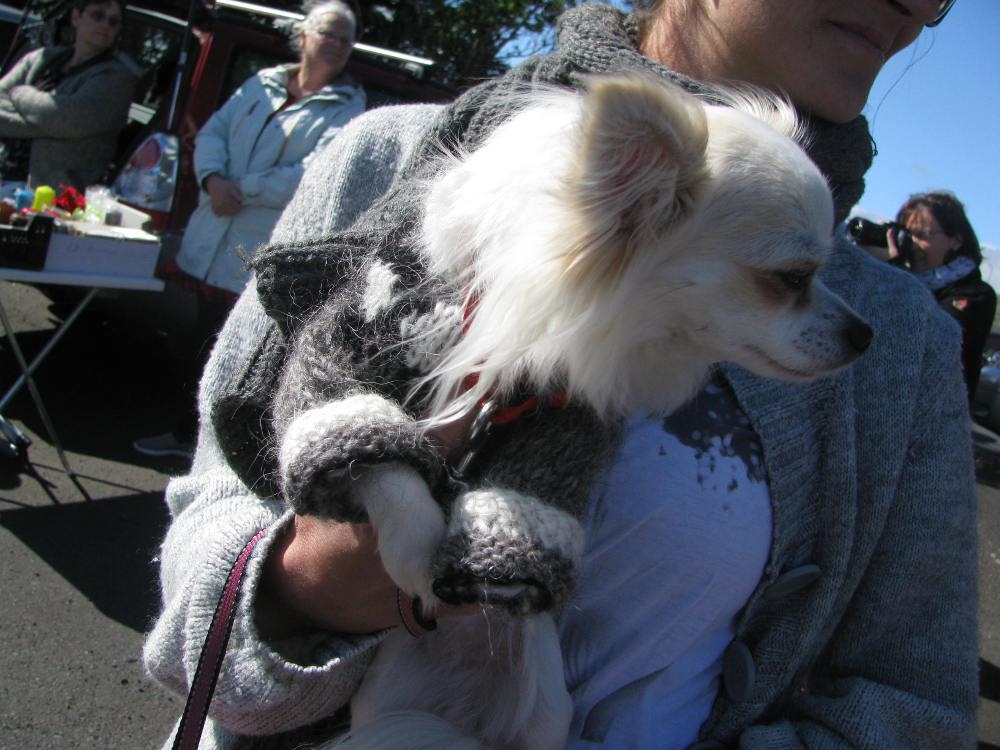
Doggie sweater!
2. Knitting
Icelanders knit a lot and Icelandic wool is the only material that will definitely keep you warm and dry in almost any weather (one sweater takes about an hour to soak through in rain says personal experience). While no season sees an end to this hobby, autumn really kickstarts everyone who wields a pair of needles. Now’s the time to find some great patterns and start out for a new sweater for winter, or maybe a hat, a scarf or a pair of mittens, maybe then your family and friends won’t be eaten when Christmas comes*. 😉
3. Traffic jams
Ok, so I call them traffic jams but note that traffic rarely gets stuck here. You’ll be moving at snail pace and a distance that usually takes 20 minutes to drive will stretch to half an hour or 40 minutes at worst, but after a long summer of pleasantly clear roads the sudden change is as annoying as it’s noticeable.
What’s causing this? Students. The change happens exactly on the day that university and other schools begin and this being Iceland where public transport is almost nonexistent and expensive, driving is the most feasible option if you don’t happen to be lucky enough to live near a bus connection.
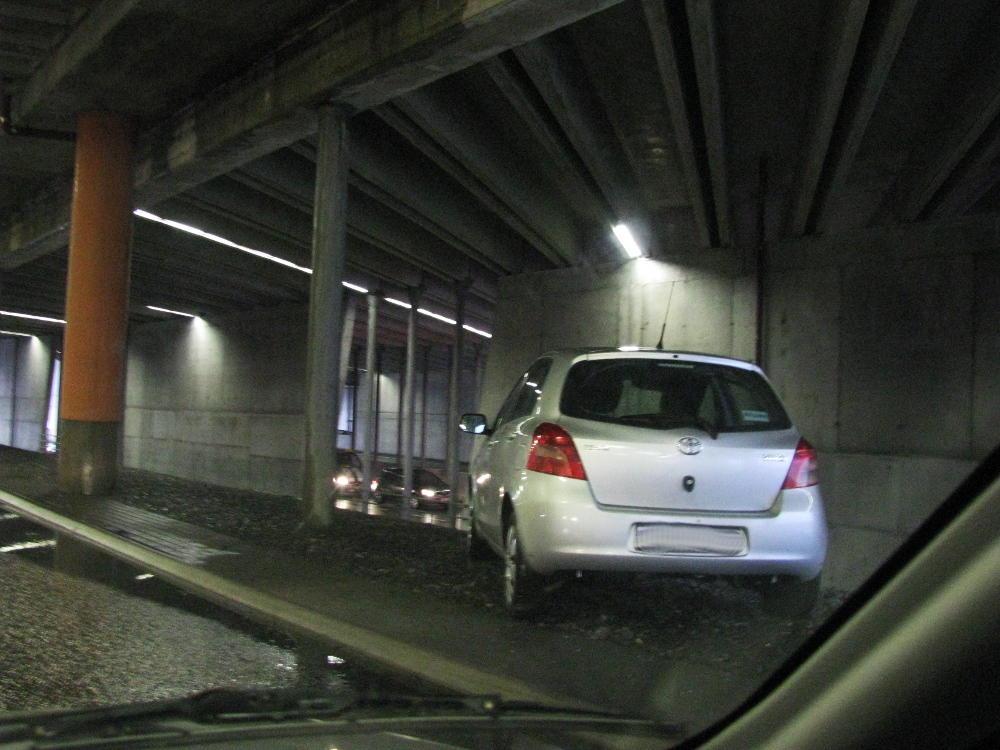
This car is parked on the side of a parking hall. Where they are there’s definitely no parking spaces, only a sheer drop down to the road…
4. Bad parking explosion
What does the above increase in traffic mean? Lots of people parking like they forgot their eyes and shame at home, of course, and these are not just students either. For some truly spectacular Icelandic parking I recommend the FB page Verst lagði bílinn (= the worst parked car)(link).
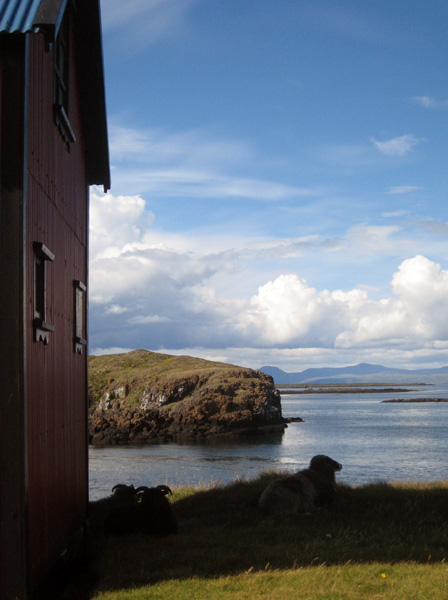
5. Réttir
Sheep sheep everywhere! If you’re looking for a truly Icelandic experience, the farmers welcome all help at réttir sites around the country. Icelandic sheep spend their summers in freedom, often on highlands, mountains, wherever they think to go to, and come autumn they need to be brought back home because hardy as they are they wouldn’t survive the winter outdoors. Horsemen go gather the sheep, drive them to the réttirs, and that’s where you may be coming in.
First of all, you may be needed to form a human wall to ensure the sheep enter the réttir, a round fenced area circled by another, segmented area. Each segment belongs to a farmer, and now that the sheep are back it’s time to separate them to their owners. For this you grab a sheep, hold it between your legs and check its ear markings, and then steer it by the horns to the correct segment.
A réttir is a lot of heavy work, and though it’s volunteer work and you won’t be paid, everyone who partakes is typically invited to an after réttir party with food and lots of singing. For what one looks like, check f.ex. here and here.
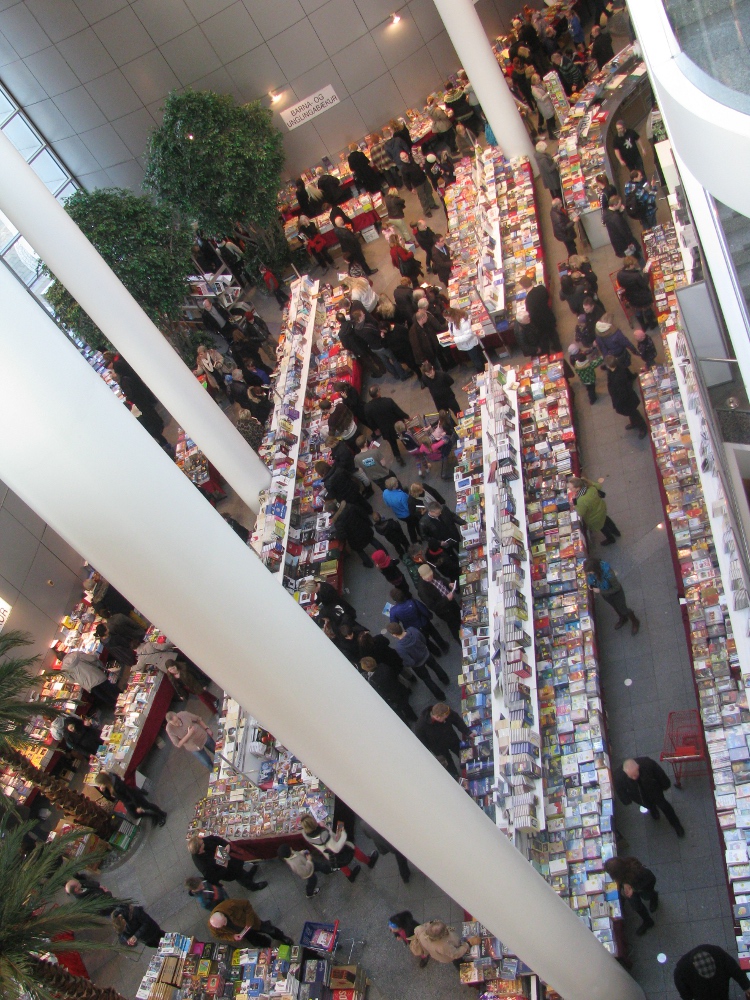
An annual book festival at Perlan.
6. Books
For students the sudden appearance of books into one’s life is normal, but reading (and writing) is actually a really popular hobby in Iceland. Autumn is a great season for the book stores that will see a continuing rise towards the highest season of them all, Christmas. A book is always a safe choice for a Christmas present and are carefully picked to suit their recipient: Hulda has f.ex. received books on Medieval Icelandic idea of love and family, history of Icelandic national dress and jewellery and various Icelandic folk story collections.
Autumn does provide an ideal background for reading, because it’s also the storm season in Iceland. Typically September begins to cool down, then we’ll have two weeks of trees changing colour and then the bad weather crashes in stripping every branch bare. From mid-October on anything and everything can and is going to happen weather-wise, and even beautiful days will prove to be gluggaveður (= weather that looks sunny and beautiful but is actually miserably cold). Best to throw on a new sweater with a good book in hand and listen to the ravens cronk outside, or the wind throw various items across the yard, whichever you might be having as your background “music”. Icelandic autumn is lovely – indoors.
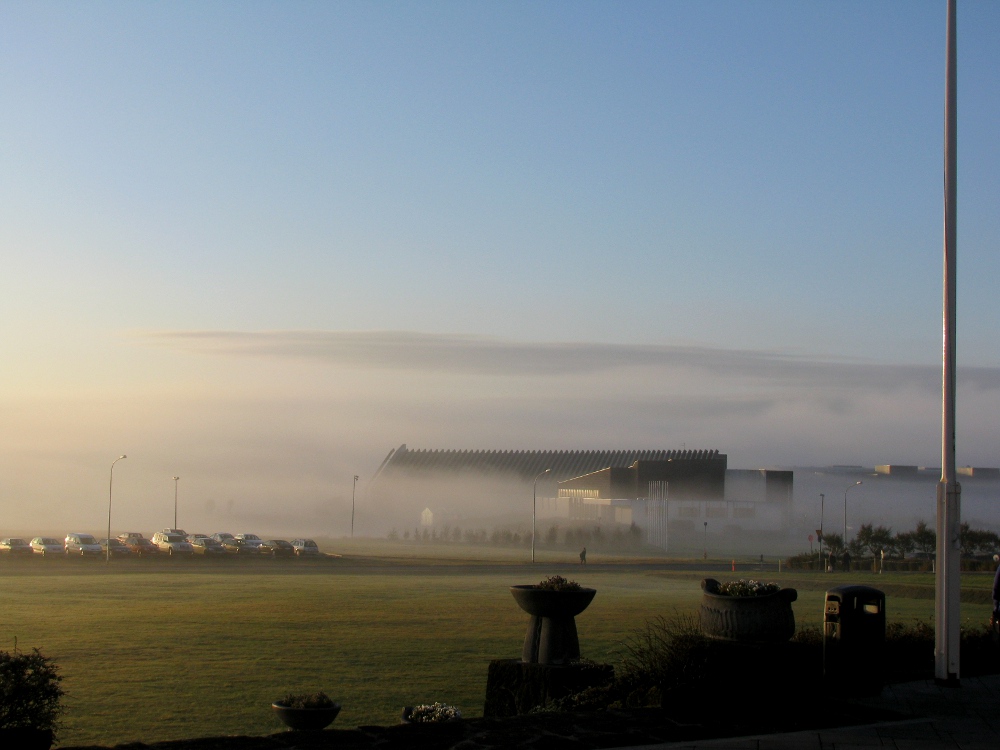
Late October morning mist near the university.
* Icelandic Christmas tradition has a creature called Christmas cat, that eats anyone who doesn’t receive a new item of clothing for Christmas.

Build vocabulary, practice pronunciation, and more with Transparent Language Online. Available anytime, anywhere, on any device.
About the Author: hulda
Hi, I'm Hulda, originally Finnish but now living in the suburbs of Reykjavík. I'm here to help you in any way I can if you're considering learning Icelandic. Nice to meet you!




Comments:
Helen:
Hæ Hulda.
I can now better understand your posts having visited Iceland in May. I think I at least got that right as I had considered an October visit, but it seems the weather can take a nasty turn at that time.
Unfortunately I can’t see your photos but the links are great. I have joined an Icelandic knitters’ group on facebook. It’s a great pastime and I love the Icelandic patterns. It’s also helping me to improve my Icelandic.
Helen.
Helen:
I can now see the photos! Lovely!